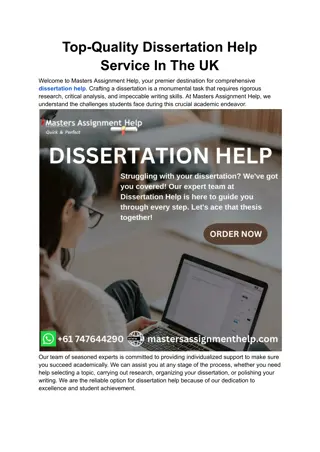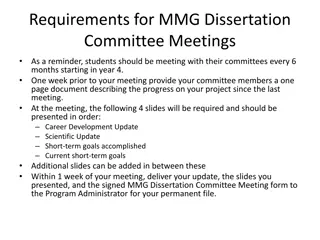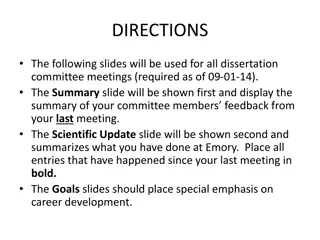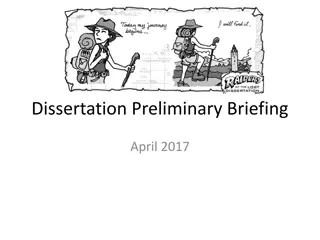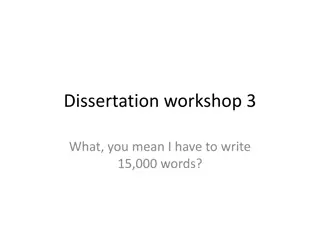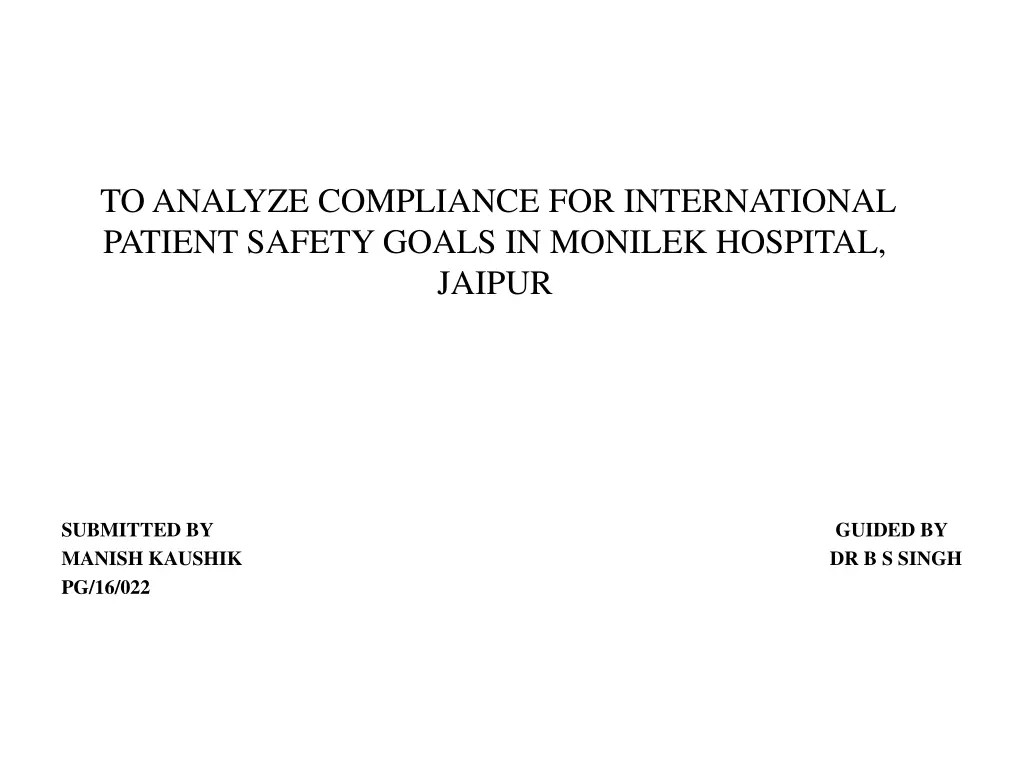
Analyzing Compliance for International Patient Safety Goals at Monilek Hospital Jaipur
Ensuring patient safety is crucial in healthcare. This analysis focuses on International Patient Safety Goals at Monilek Hospital in Jaipur, emphasizing the importance of identifying patients correctly, improving communication, and enhancing medication safety to reduce harm and enhance healthcare quality.
Download Presentation

Please find below an Image/Link to download the presentation.
The content on the website is provided AS IS for your information and personal use only. It may not be sold, licensed, or shared on other websites without obtaining consent from the author. If you encounter any issues during the download, it is possible that the publisher has removed the file from their server.
You are allowed to download the files provided on this website for personal or commercial use, subject to the condition that they are used lawfully. All files are the property of their respective owners.
The content on the website is provided AS IS for your information and personal use only. It may not be sold, licensed, or shared on other websites without obtaining consent from the author.
E N D
Presentation Transcript
TO ANALYZE COMPLIANCE FOR INTERNATIONAL PATIENT SAFETY GOALS IN MONILEK HOSPITAL, JAIPUR SUBMITTED BY MANISH KAUSHIK PG/16/022 GUIDED BY DR B S SINGH
INTRODUCTION Patient Safety is the absence of preventable harm to a patient during the process of health care. It has been defined as the reduction and mitigation of unsafe acts within the healthcare system, as well as through the use of best practices shown to lead to optimal patient outcomes. The purpose of International Patient Safety Goals is to improve patient safety. The goals focus on problems in healthcare, safety and how to solve them.
INTERNATIONAL PATIENT SAFETY GOALS Why patient safety goals. List of the goals.
Why patient safety goals To improve specific improvement in patient safety. To focus on problems in health care safety and how to solve them.
List of International patient safety goals 1) Identify patients correctly. 2) Improve effective communication 3) Improve the safety of high alert medications 4) Ensure correct site, correct procedure, correct patient surgery 5) Reduce the risk of health care associated infections. 6) Reduce the risk of patient harm resulting from falls.
Identify patients correctly To reliably identify the individual as the person for whom the service or treatment is intended. To match the service or treatment to that individual. The identifiers can be: 1) Patient complete name. 2) Patient medical record number. 3) Birth date Patients are identified before providing treatments and procedures/diagnostics, administering medication, serving restricted diet, during time out- before a procedure, etc.
Improve effective communication Process of conveying critical information in a way that is timely, accurate, complete, clear and understood by recipient. Complete verbal and telephone test results from wards must be read back by recipient and must be confirmed by the conveyor. Standardize abbreviation, acronyms, and symbols used throughout the organization, including a list of those not to be used.
Improve the safety of high alert medications HAM- High alert medications are those which are involved in a high percentage of errors and/or sentinel events, medications that carry higher risk for adverse outcomes as well as look alike, sound alike medications (LASA). High alert categories/ HAM list should be available on the notice board in each clinical department. High alert medicines are kept in separate, secured cabinet and labeled by special warning label.
Ensure correct site, correct procedure, correct patient surgery Use a checklist, including a Time-out just before starting a surgical procedure, to ensure the correct patient, procedure and body part. Develop a process or a checklist to verify that all documents and equipment needed for surgery are on hand and correct and functioning properly before surgery begins. Mark the precise site where the surgery will be performed. Use a clearly understood mark and involve the patient in doing this.
Reduce the risk of healthcare associated infections Comply with current published and generally accepted hand hygiene guidelines. Implement an effective hand hygiene program. Develop policies and procedures that address reducing the risk of health care associated infections.
Reduce the risk of patient harm resulting from falls Develop and implement a process to reduce the risk of patient harm resulting from fall. The risk of patient harm resulting from falls can be reduced by assessing and reassessing all inpatients and those out patients whose condition diagnosis, situation or location identifies them as at high risk for fall.
Aim: To prevent harm and focused on quality of patients care Objective: To analyze compliance to patient safety goals. Represent proactive strategies to reduce the risk of medical error. To provide clear priorities and solutions for improving patient safety.
METHODOLOGY Study type: Descriptive observational study Study area: Clinical and non-clinical departments of Monilek Hospital & Research Centre. Duration of study: 1stFebruary 2018- 4thMay 2018 Data collection: primary data was collected with the help of checklist enumerating different types of parameters for patient safety namely, 1) Patient with ID band 2) Verbal order registers 3) Handover Registers 4) Legible handwriting 5) No abbreviation
6) High risk medicine with inventory 7) All other medications with inventory 8) Opened bottles labeled with date/time 9) Side rails 10) WHO surgical safety checklist 11) Hand hygiene practice The scoring pattern for the analysis used was 1 for compliance, 0 for non- compliance. It means if any of the given parameters was found complying, the score was given. On the other hand, if it was not complying then 0 was given.
Total compliance Total applicable % compliance Blood Bank Emergency Pharmacy Endoscopy Radiology Pvt Room Cath lab Dialysis Store NICU OPD MW LDR TPR Lab ICU FW OT Ward S.no. IPSG Checklist Patient with ID Band (also observe patient during Medicine administration) 1 IPSG 1 - Identify patient correctly NA NA NA NA NA Verbal Registers NA NA NA NA NA NA NA NA NA Handover Registers NA NA NA NA NA NA NA NA NA NA NA 2 IPSG 2 - Improve effective communication Legible handwriting NA NA NA NA NA NA NA NA NA NA NA NA NA No prone abbreviation NA NA NA NA NA NA NA NA NA NA NA NA NA High Risk Medicine maintained with Inventory NA NA NA All other medication managed with Inventory NA NA NA Opened bottes labelled with date/time of opening & expiry NA NA NA IPSG 3- Improve safety of high alert medication 3 If patient medicine in refrigerator it should have Reg No. & Patient Name NA NA NA NA NA NA NA NA Labeling of loaded syringe - Pts. Name, Medicine name, Date of loading Name & Signature of staff NA NA NA NA NA NA NA WHO Surgical Safety Checklist NA NA NA NA NA NA NA NA NA NA NA NA NA NA NA NA NA 4 IPSG 4 -Ensure correct patient, correct site, correct procedure Medical record audit NA NA NA NA NA NA NA NA NA NA NA NA NA NA NA NA NA NA 5 IPSG 5 - Reduce risk of Hospital Acquired Infection Compliance of Hand Hygiene Practice Side Rails used NA NA NA NA NA NA 6 IPSG 6 - Reduce Patient harm resulting from fall Fall Risk Assessment done NA NA NA NA NA NA NA NA NA NA NA NA NA
DATA ANALYSIS A total of 18 departments were analyzed. 216 Patient with ID Band (also observe patient during Medicine administration) 120 100 100 98 96 91 80 Patient with ID Band (also observe patient during Medicine administration) 60 40 20 0 FEB '18 MAR '18 APR '18 AVERAGE
IPSG 2: Improve effective communication IPSG 2: Improve Effective Communication 98 100 88 90 85 85 80 70 60 50 40 30 20 10 0 Verbal Order Registers Handover Registers Legible handwriting No error prone abbreviation
Based on the data collected, it was observed that: Communication issues with doctors was one of the contributing factors as verbal orders were given. Handoff communication among caregivers. Content was not consistently complete and accurate as doctors were not using block letters in prescription. Abbreviations were used.
IPSG 3: Improve safety of high alert medication IPSG 3- Improve safety of high alert medication 100 96 93 91 87 86 90 80 70 60 50 40 30 20 10 0 High Risk Medicine maintained with Inventory All other medication managed with Inventory Opened bottes labelled with date/time of opening & expiry If patient medicine in refrigerator it should have Reg No. & Patient Name Labeling of loaded syringe - Pts. Name, Medicine name, Date of loading Name & Signature of staff
Based on the data collected, it was observed that: There was no inventory for high risk medicines and other medicines. The medicines were not labeled. Medicines were not kept separated from look alike sound alike medicines (LASA).
IPSG 4: Ensure correct patient, correct site, correct procedure IPSG 4: Ensure correct patient, correct site, correct procedure 99 100 90 80 75 70 60 50 40 30 20 10 0 WHO Surgical Safety Checklist Medical record audit
IPSG 5: Reduce risk of hospital acquired infection Compliance of Hand Hygiene Practice 100 98 96 93 90 86 80 70 60 50 Compliance of Hand Hygiene Practice 40 30 20 10 0 FEB '18 MAR '18 APR '18 AVERAGE
The nursing staff was not following the hand hygiene practices as they were not well trained about the hand hygiene and hand washing movements. They were not aware about that when should hand hygiene practice should take place. They were not aware about the six steps of hand washing. Signages were not displayed.
IPSG 6: Reduce patient harm resulting from fall IPSG 6: Reduce patient harm resulting from fall 98 100 94 90 80 70 60 50 40 30 20 10 0 Side Rails used Fall Risk Assessment done
It can be depicted that side rails and belts were not used while transferring the patients from one place to another on stretcher as well as on wheel chairs. The main problem was observed during the transfer of vulnerable patients who were unconscious and needed extra care. The gap was found because the staff was not trained on this matter.
International patient safety goals International Patient Safety Goals 96 96 100 93 90 89 87 90 80 70 60 50 40 30 20 10 0 IPSG 1 - Identify patient correctly IPSG 2 - Improve effective communication IPSG 3- Improve safety of high alert medication IPSG 4 -Ensure correct patient, correct site, correct procedure IPSG 5 - Reduce risk of Hospital Acquired Infection IPSG 6 - Reduce Patient harm resulting from fall
GAPS Ineffective communication between healthcare providers High risk medicines inventory were not maintained separately. Fall assessment was not done properly Hand hygiene compliance rate was not up to the benchmark.
RECOMMENDATIONS/ SUGGESTIONS Identify Patient Correctly To use two patient identifiers during and before any procedure or treatment which are Name and the Registration Number. To compare the two identifiers with the arm band to ensure the correct patient receives the correct treatment. Improve Effective Communication To get the important test results to the right people timely. Documentation of who called and the time for all the critical values. To conduct bedside shift reports. To ensure that verbal order registers are signed by the Doctor by whom the order was received.
Improve safety of high alert medication To label all the medicines, syringes with proper labels and stickers. To use bedside scanning of patient reports and medication charts for confirming the medicines. To complete the medication history. Ensure correct patient, correct site, correct procedure To follow universal protocol policy (correct patient and the correct site) To ensure that the physician marks the correct site on the patients body prior to surgery/ procedure. Reduce risk of Hospital Acquired Infection Following hand cleaning guidelines to improve hand cleaning. Displaying the signages of hand washing step and hand hygiene movements on each and every nursing station.
Reduce patient harm resulting from fall Screening of patients to determine which patient is more vulnerable and needs extra care. Arranging appropriate transferring methods to ensure patient safety and to reduce patient harm from the fall. Ensuring that every bed and wheelchair is with side rails and belts so that while transferring a patient, they can be handled with care.
CONCLUSION Patient safety is the cornerstone of high quality health care. Nurses are critical to the surveillance and coordination that reduce such adverse outcomes. Much work remains to done in evaluating the impact of nursing care on positive quality indicators, such as appropriate self-care and other measures of improved health status.




